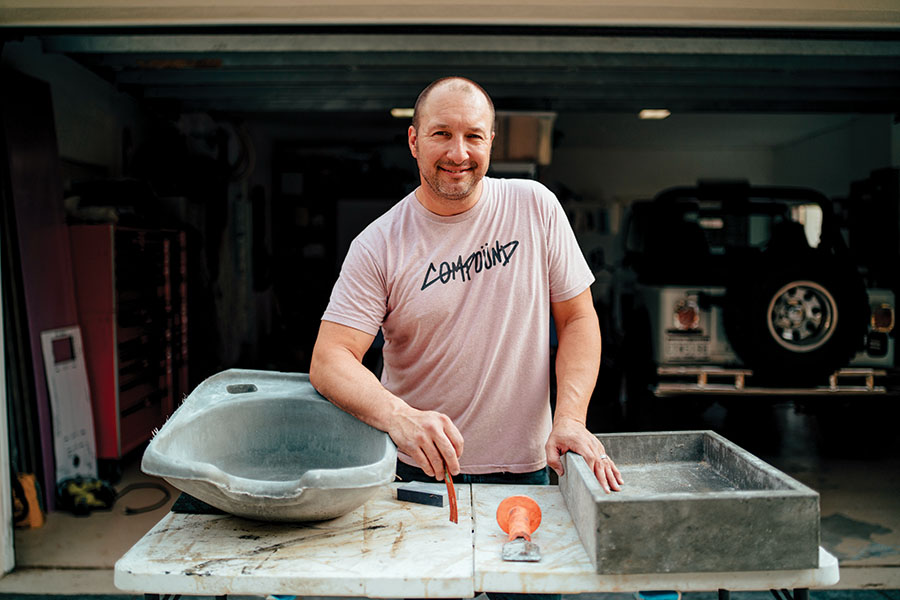The artists at Ben Nettles Concrete Design, Jake Brady Concrete By Design and Stoned Design Studio are creating one-of-a-kind accents, sculptures and pieces of functional art for homes and businesses throughout the Sarasota-Manatee region. Some of these crafters have transitioned from other media to the concrete realm, while others moved from using concrete in standard commercial projects to taking on edgier creative commissions. Working with concrete is a patience-intensive, arduous process but, for these builders, it is a labor of love—and the products they produce are durable enough to last lifetimes.
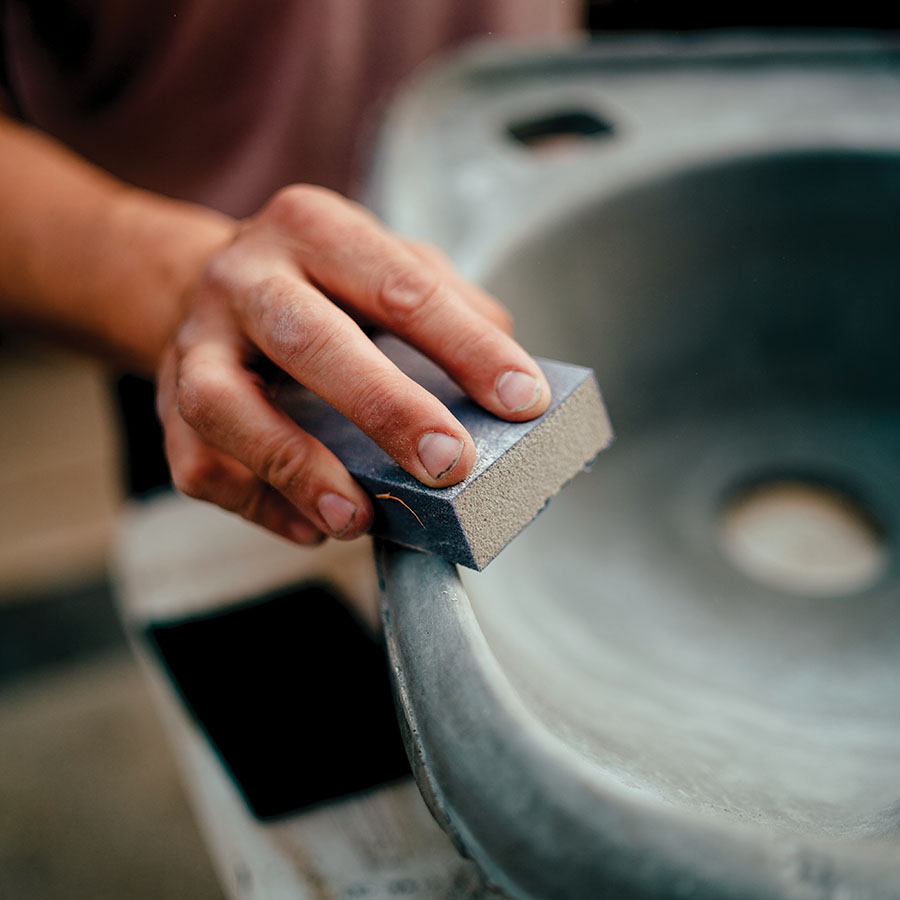
PHOTOGRAPHY BY WYATT KOSTYGAN
Ben Nettles—a painter and illustrator who graduated from Ringling College of Art and Design in 2006— always had a natural aesthetic eye. But it was during his work with renowned concrete design innovator Fu-Tung Cheng that Nettles found his creative niche. Nettles “became enamored with an emerging body of research in concrete innovation,” completed advanced countertop certification training with Cheng, and ultimately founded his company 15 years ago. Now Nettles—who also underwent advanced Glass Fiber Reinforced Concrete (GFRC) training and advanced fiber optic certification at the Concrete Countertop Institute—creates custom modern concrete pieces for homeowners, architects, remodelers and builders. Some of his most prized projects include a private residence at The Concession Private Golf Club in Bradenton (namely the outdoor space with a kitchen, bar, tables, benches, fire pits and planters that stretch across several thousand square feet); a private residence on Harbor Drive in Sarasota County, which began with floating concrete stairs at the entrance and ended with floating stairs leading down to the pool (as well as a nearly 30-foot-high indoor fireplace mantel surround that required major ingenuity and manpower); and a private residence on Anna Maria Island, for which the client collected shells for Nettles to imbed into several concrete pieces for a custom sentimental feel.
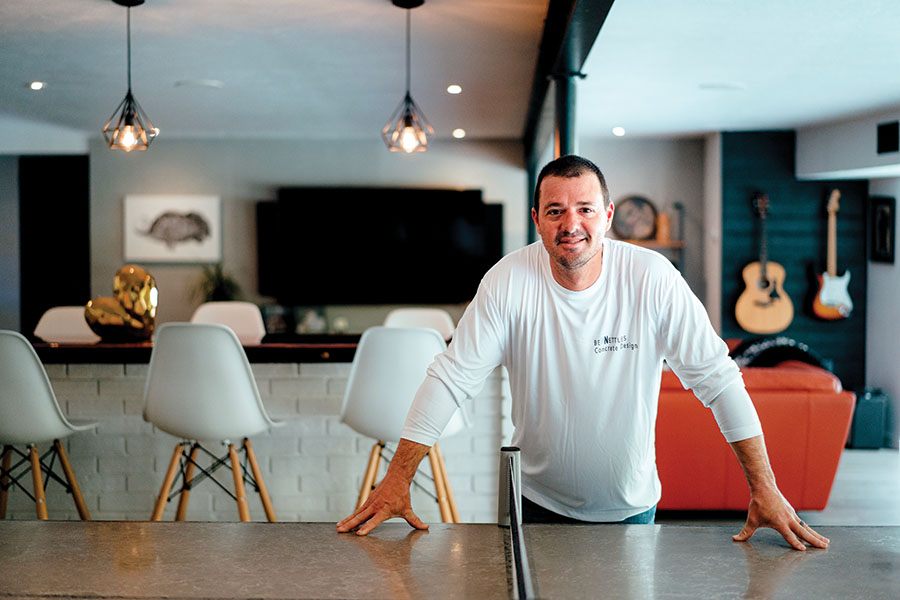
BEN NETTLES OF BEN NETTLES CONCRETE DESIGN: 411 S. PINEAPPLE AVE., SARASOTA, 941-404-9873, BENNETTLESCONCRETE.COM
“Our team enjoys that every piece of every project is unique and one-of-a-kind. There is a lot of pride involved knowing that you are a part of something made by hand that can never be exactly recreated. It never gets boring,” Nettles says. “Our creativity makes us stand out. And our attention to detail, along with meeting deadlines, is a key to us being in business for over 15 years.”
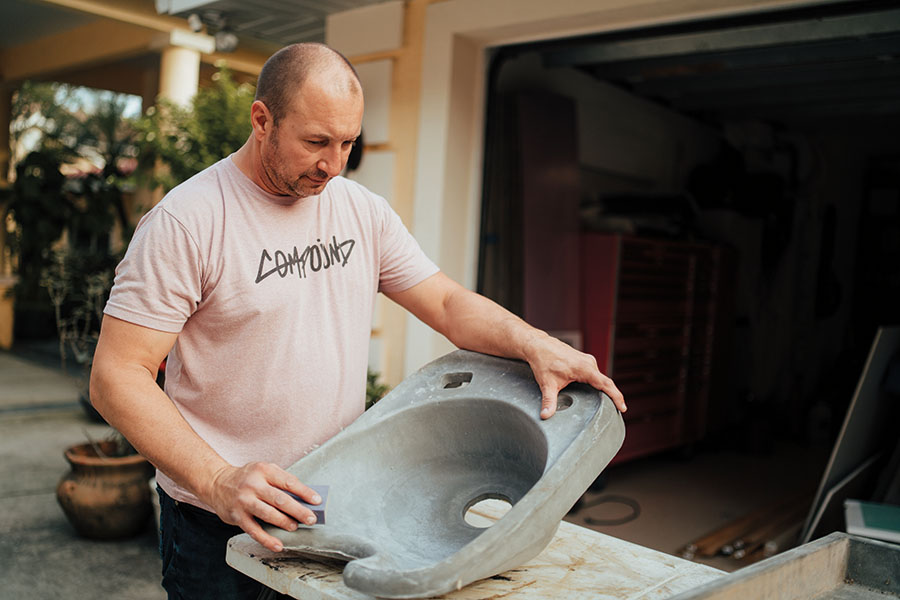
PHOTOGRAPHY BY WYATT KOSTYGAN.
Jake Brady had a similar fascination with Cheng that led to his current career path. A native of Nova Scotia, Canada, Brady moved to Sarasota in 1997 and remodeled homes for a decade before founding his concrete business 16 years ago. His life changed after reading Cheng’s 2004 book, Concrete Countertops, so he studied at the Concrete Countertop Institute in both wet-cast concrete and GFRC techniques. Brady has continued to train under fellow master artisans throughout the country for years. Brady uses as few seams as possible on his rock-solid, enduring creations. He specializes in sustainable art for interiors and exteriors of homes and businesses, from kitchen countertops and vanities to fire pits and bars.
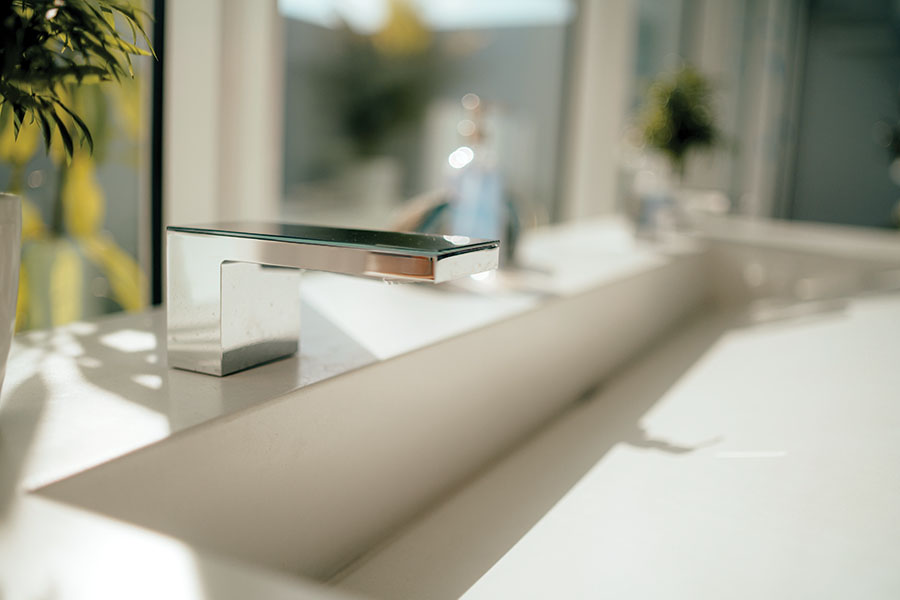
JAKE BRADY CONCRETE BY DESIGN. PHOTOGRAPHY BY WYATT KOSTYGAN
“Concrete is an amazing green material with limitless possibilities,” Brady says. “Our surfaces are beautiful and long-lasting, and play a vital role in reducing the burden on our nation’s landfills.” His most exciting undertakings have included a rigorously engineered project for Rick Owens in the Miami Design District (62 handmade GFRC panels for an interior and exterior storefront, with each panel consisting of 26 individual steps); and a water wall at H2O Suites in Key West (a collaborative Art in Public Places installation featuring custom handmade concrete glass panels). “Concrete is paradoxical by nature. It is strong and hard in form and function, soft and warm in aesthetic, giving a sense of mass while achieving architectural delicateness,” Brady says. “It surrounds our senses as the foundation of our manmade physical world. The artisanal potential invites an experience so personal and as unique as the individual.”
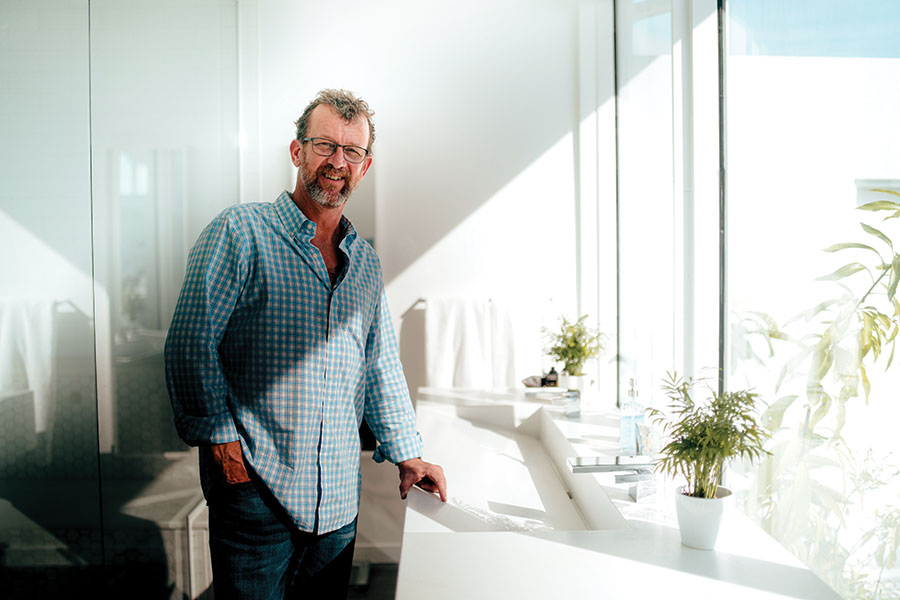
JAKE BRADY OF JAKE BRADY CONCRETE BY DESIGN: 941-312-5993, JAKEBRADYCONCRETE.COM
Stoned Design Studio's Schascle Yochim thrives on the challenges that come with a temperamental artistic medium like concrete. “There are challenges like temperature, humidity and the workability of the concrete (you don’t have a lot of time to pour it or make it flow the right way before it starts to harden up),” Yochim says. “But the creative part gets my juices flowing. The product, when it’s finished, is a showpiece.” Yochim has been working with concrete for the past five years as a side project to his general contracting business (Re-Construct, LLC). He creates functional, modern, artistic products out of concrete, wood and steel—all meticulously by hand and using only natural, biodegradable materials. He prefers to stay somewhat private and does not widely advertise his concrete skills, only accepting commissions via word of mouth. But concrete permeates all aspects of his day-to-day work, too. He recently built a house in which he custom-designed and constructed every concrete bathroom sink for the residence, and he completed a project with 16-foot concrete dining tables featuring wood inlay. He takes on a few custom homes each year—a profession that led him to stumble upon concrete art as an additional passion.
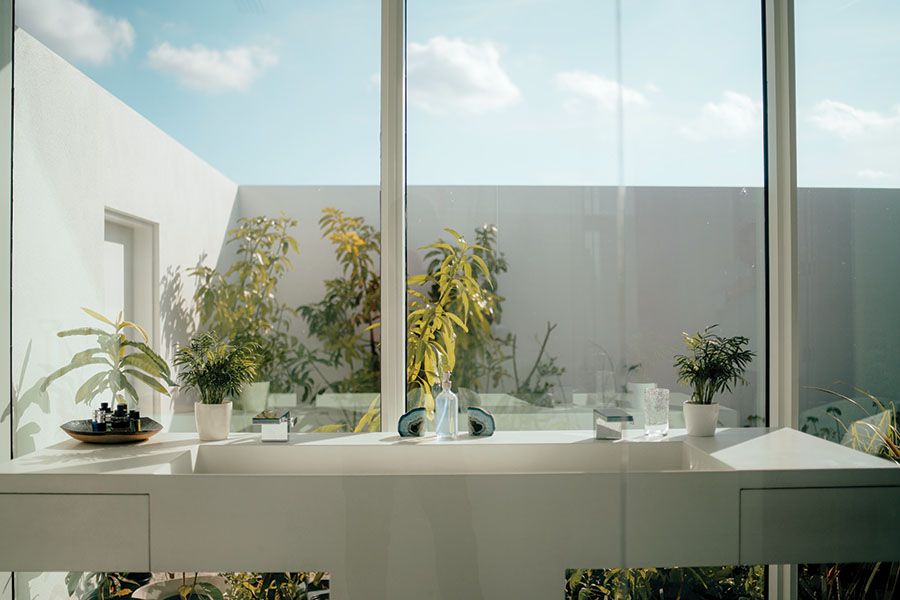
PHOTOGRAPHY BY WYATT KOSTYGAN
“The concrete work just kind of came about because, in one of the houses we were doing, we were looking for a concrete sink and I couldn’t find anyone to do it, so I started doing some research on how to do it myself,” Yochim says, adding that he thereafter decided to train for two weeks in Arizona in the GFRC technique. While some concrete craftsmen might concentrate on specific niches like countertops, for example, Yochim prefers more “off-the-wall” designs for his concrete endeavors. “I enjoy the freedom of being able to make different creations you wouldn’t normally see done with concrete—like fabric forming, where I can make shapes that flow like fabric,” Yochim says. “I’m also more of an old-school craftsman, where I like to make the concrete look like concrete (as opposed to making it look like acrylic or something else).” SRQ




